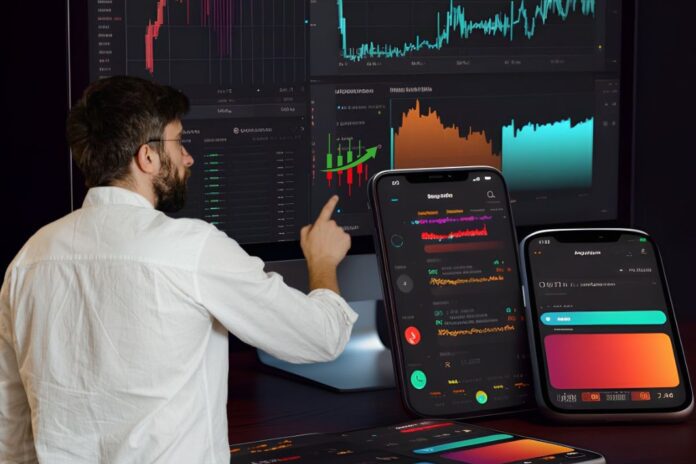How Technology Has Influenced The Development Of Forex Trading

Over the past few decades, technology has completely transformed the way we live, work, and communicate. One area that has seen a massive shift due to technology is the world of financial markets — especially forex trading. Forex, or foreign exchange trading, involves buying and selling currencies to make a profit.
Once a space dominated by large financial institutions and banks, the forex market is now more accessible to individual traders than ever before, thanks to advances in technology. From the rise of online platforms to the development of algorithmic trading, technology has not only changed how forex trading is done but has also given birth to new models like prop trading.
The Shift From Manual To Electronic Trading
In the early days, forex trading was done over the phone or in person. Large institutions like banks would execute trades through brokers, and the whole process was manual and time-consuming. With the rise of the internet and advanced computing systems in the 1990s and early 2000s, forex trading began to go digital.
Electronic trading platforms were developed, allowing trades to be placed instantly with just a few clicks. This shift made forex trading much faster and more efficient. Real-time data and charts became available, helping traders make better decisions. The ability to trade 24/5 from anywhere in the world also opened the doors for retail traders — individuals trading with their own money — to participate in a market that was once reserved for professionals.
The Rise Of Online Trading Platforms
Technology has played a key role in the rise of online trading platforms such as MetaTrader 4 (MT4), MetaTrader 5 (MT5), cTrader, and many others. These platforms provide tools like charting software, technical indicators, economic news feeds, and order execution systems all in one place. They are designed to be user-friendly, making it easier even for beginners to start trading.
These platforms also support automated trading, where traders can use bots or “Expert Advisors” to place trades based on pre-programmed rules. This kind of automation reduces emotional trading and allows strategies to be tested and implemented 24/7.
Mobile Trading: Forex On The Go
One of the most significant technological developments in recent years is mobile trading. Today, nearly every broker offers mobile apps that allow traders to monitor the markets, analyze charts, and place trades from their smartphones or tablets. This level of convenience has attracted a new generation of traders who prefer flexibility and speed.
Mobile trading apps also come with features like push notifications, price alerts, and biometric login, further enhancing the user experience. With mobile technology, forex trading is no longer tied to a desk — it can happen anywhere, at any time.
Algorithmic and AI-Based Trading
Another major advancement in forex trading is the use of algorithms and artificial intelligence (AI). Algorithmic trading, or algo trading, uses computer programs to execute trades based on predefined criteria such as price, volume, timing, and other factors. These systems can analyze market conditions and execute orders at speeds impossible for human traders.
AI takes this a step further by using machine learning to adapt and improve strategies over time. AI can recognize patterns in large sets of data and make predictions that help traders make better decisions. These technologies are being used by both institutions and individual traders to gain an edge in the fast-moving forex market.
The Emergence of Prop Trading Thanks to Technology
Proprietary trading, or “prop trading,” has also seen a major transformation due to technology. In prop trading, firms allow traders to use the company’s capital to trade and earn a share of the profits. Traditionally, these firms required traders to be on-site and have a deep background in finance.
However, with cloud computing, online evaluation programs, and remote desktop platforms, prop trading has become more accessible. Traders from anywhere in the world can now join prop firms after passing online assessments. These prop trading firms provide trading platforms, educational resources, and sometimes even AI tools to help their traders succeed.
Thanks to technology, many prop trading firms now operate fully online. This has created a new career path for aspiring traders, giving them access to capital and professional-level tools without having to invest large amounts of their own money.
Social And Copy Trading
Technology has also led to the rise of social and copy trading platforms. These platforms allow users to follow and automatically copy the trades of successful traders. This has made it easier for beginners to learn and potentially profit from the experience of others.
Platforms like TenTrade have built communities where traders share their strategies and performance, creating a more collaborative and transparent trading environment. This development wouldn’t have been possible without the data-sharing capabilities and connectivity that modern technology provides.
Enhanced Security And Regulation
With the rise of online forex trading, security has become a top concern. Technology has helped make trading platforms more secure through encrypted connections, two-factor authentication, and regular software updates. Regulatory bodies also use technology to monitor broker activities and protect traders from fraud or manipulation.
Moreover, digital tools make it easier for brokers to comply with regulations, including Know Your Customer (KYC) and Anti-Money Laundering (AML) requirements, helping create a safer trading environment for everyone involved.
Final Thoughts
Technology has changed the forex trading landscape in every way imaginable. It has made trading faster, more accessible, and more data-driven. It has empowered individual traders with tools and information once only available to professionals. It has also enabled the rise of prop trading, offering new opportunities for talented traders worldwide.
As technology continues to evolve — with the integration of blockchain, more advanced AI, and improved data analytics — the future of forex trading looks even more innovative and dynamic. For those willing to learn and adapt, technology has made the forex market more open and full of opportunity than ever before.
